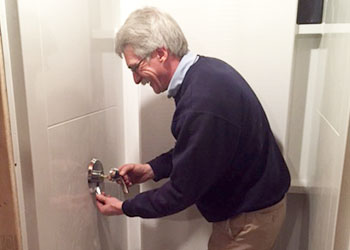Every year American families use an average of more than 500 gallons of water each day. We want water where and when we need it. But we don’t want water where it shouldn't be. It shouldn't be in the basement, standing in the backyard or covering a newly planted field.
The right residential wastewater system can help receive and collect used water, store it temporarily, and move it to a treatment system with no hassle or mess for you or your family.
Wastewater system basics
Wastewater consists of fluids containing unscreened solids. These are typically sewage and effluent. Most sewage lift systems are built around submersible wastewater pumps that are designed to be submerged in the wastewater they are pumping. These systems may also be referred to as a sewage system, a lift station or a pumping station.Common system types
 Residential (urban or rural) - In a typical residential system, all contaminated water is drained into the basin. It is then pumped to a gravity sewer system using a non-clog sewage or grinder pump in certain applications
Residential (urban or rural) - In a typical residential system, all contaminated water is drained into the basin. It is then pumped to a gravity sewer system using a non-clog sewage or grinder pump in certain applications- Mound - Effluent (wastewater separated from solids) from the septic tank is pumped to a “mound,” or leach field. Local codes may require this type of system. It may also be used if you prefer distribution of effluent across the drainage field.
- Sewage lift station - A typical sewage lift station is equipped with one sewage pump lifting sewage to a public or private collection system.
-
Municipal and commercial sewage - A typical municipal/commercial sewage station is designed for heavy-duty service.
Types of submersible wastewater pumps
Goulds Water Technology offers a variety of wastewater pumps to choose from when designing your system. In general, submersible pumps are classified by the nature of the sewage and the size of the solids they are capable of handling. The technicians at Rapid Service can help you decide which of the following wastewater pumps best fit your needs:- Sump pumps - 3/8" solids, generally dirty water with solids not typically present
- Effluent pumps - less than 1" solids, partially or completely treated wastewater flowing out of a septic tank or treatment plant
- Sewage pumps - 2" solids, household water that may contain human waste
- Sewage pumps (municipal and commercial) - 2 1/2” and larger solids, municipal or commercial wastewater
- Grinder pumps - used where a gravity system is not practical, equipped with stainless steel cutters that cut solids into small pieces so the solids can be pumped under pressure through smaller diameter piping























